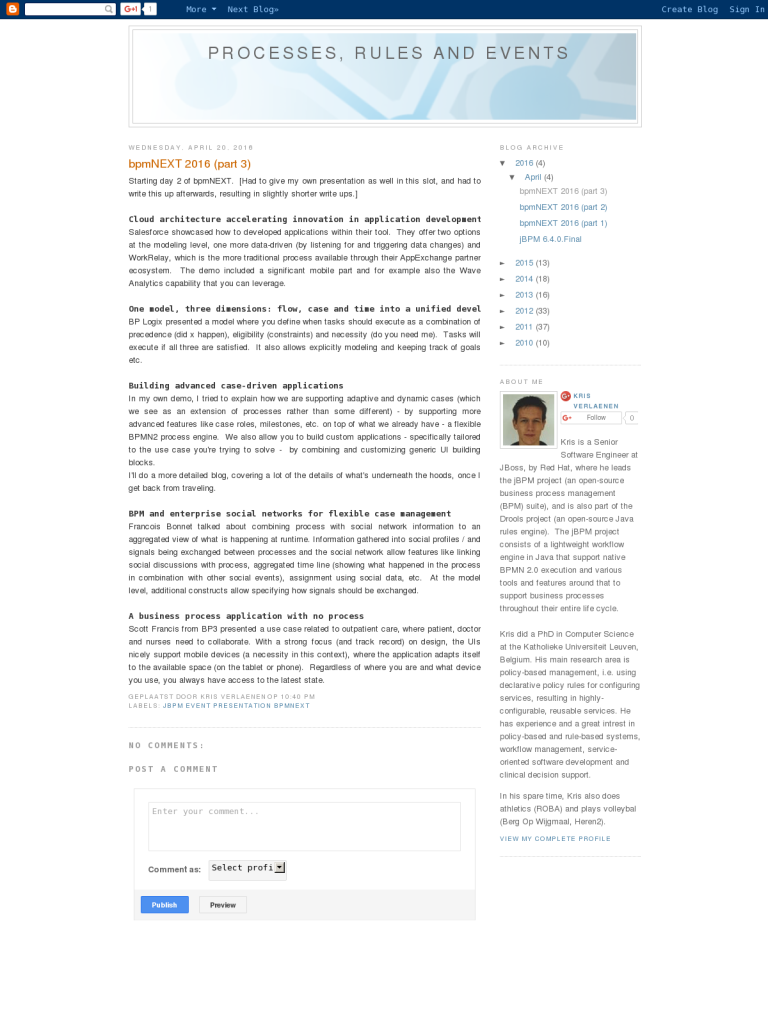bpmNEXT 2016 (part 3)
Blog: PROCESSES, RULES AND EVENTS
Starting day 2 of bpmNEXT. [Had to give my own presentation as well in this slot, and had to write this up afterwards, resulting in slightly shorter write ups.]
Cloud architecture accelerating innovation in application development
Salesforce showcased how to developed applications within their tool. They offer two options at the modeling level, one more data-driven (by listening for and triggering data changes) and WorkRelay, which is the more traditional process available through their AppExchange partner ecosystem. The demo included a significant mobile part and for example also the Wave Analytics capability that you can leverage.
One model, three dimensions: flow, case and time into a unified development
BP Logix presented a model where you define when tasks should execute as a combination of precedence (did x happen), eligibility (constraints) and necessity (do you need me). Tasks will execute if all three are satisfied. It also allows explicitly modeling and keeping track of goals etc.
Building advanced case-driven applications
In my own demo, I tried to explain how we are supporting adaptive and dynamic cases (which we see as an extension of processes rather than some different) – by supporting more advanced features like case roles, milestones, etc. on top of what we already have – a flexible BPMN2 process engine. We also allow you to build custom applications – specifically tailored to the use case you’re trying to solve – by combining and customizing generic UI building blocks.
I’ll do a more detailed blog, covering a lot of the details of what’s underneath the hoods, once I get back from traveling.
BPM and enterprise social networks for flexible case management
Francois Bonnet talked about combining process with social network information to an aggregated view of what is happening at runtime. Information gathered into social profiles / and signals being exchanged between processes and the social network allow features like linking social discussions with process, aggregated time line (showing what happened in the process in combination with other social events), assignment using social data, etc. At the model level, additional constructs allow specifying how signals should be exchanged.
A business process application with no process
Scott Francis from BP3 presented a use case related to outpatient care, where patient, doctor and nurses need to collaborate. With a strong focus (and track record) on design, the UIs nicely support mobile devices (a necessity in this context), where the application adapts itself to the available space (on the tablet or phone). Regardless of where you are and what device you use, you always have access to the latest state.
Leave a Comment
You must be logged in to post a comment.








